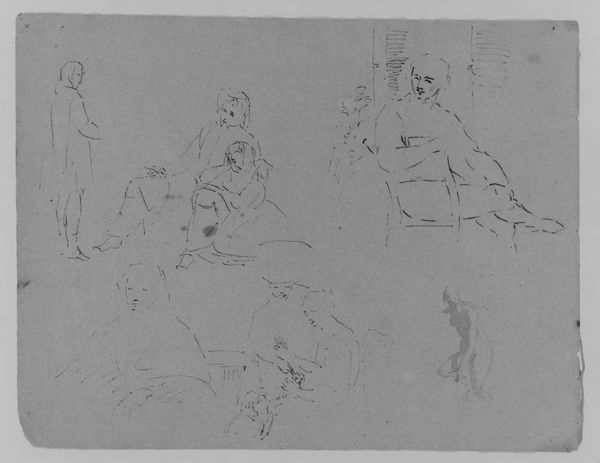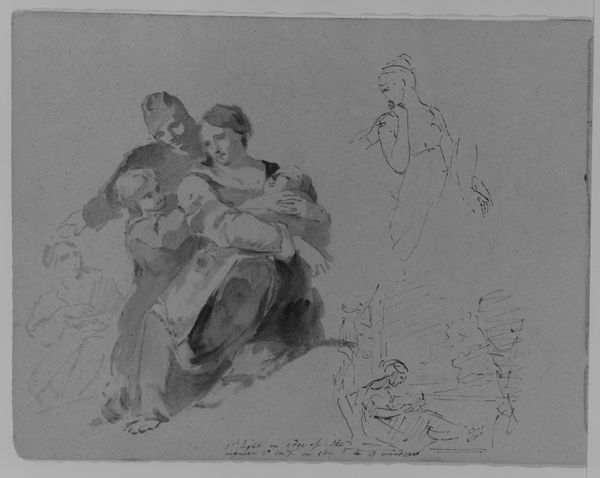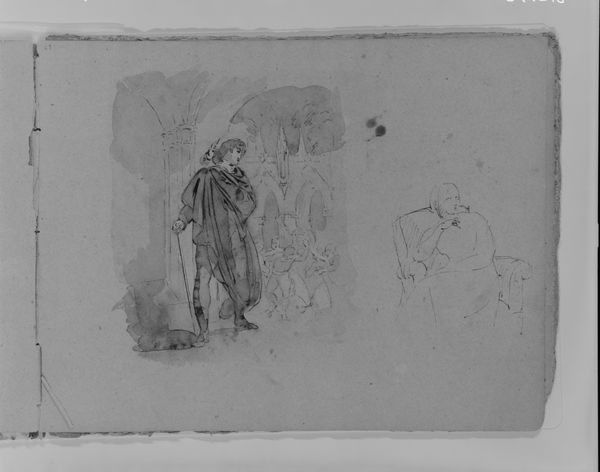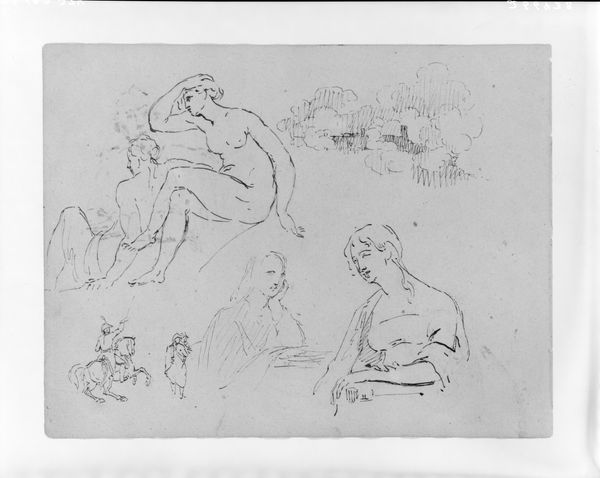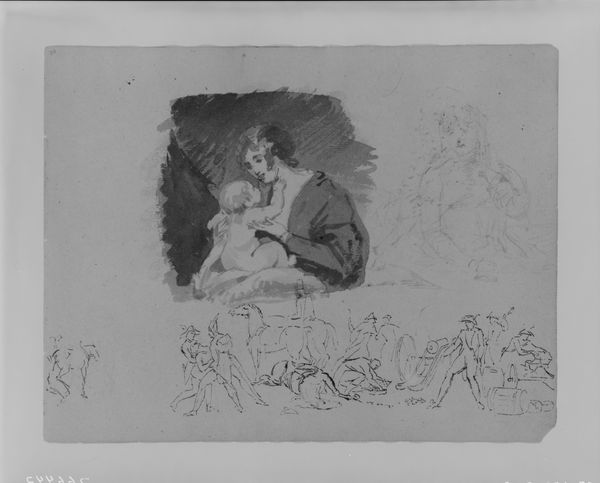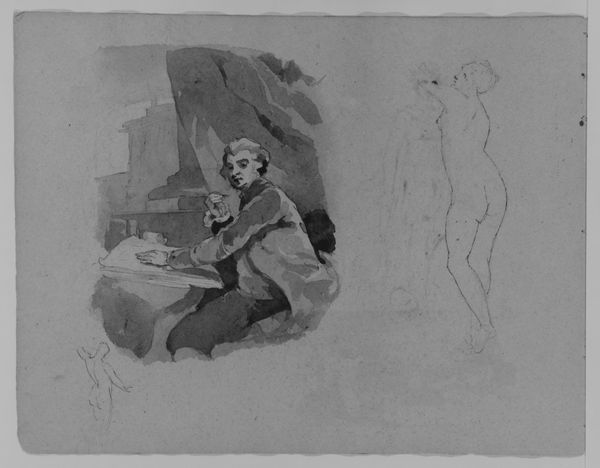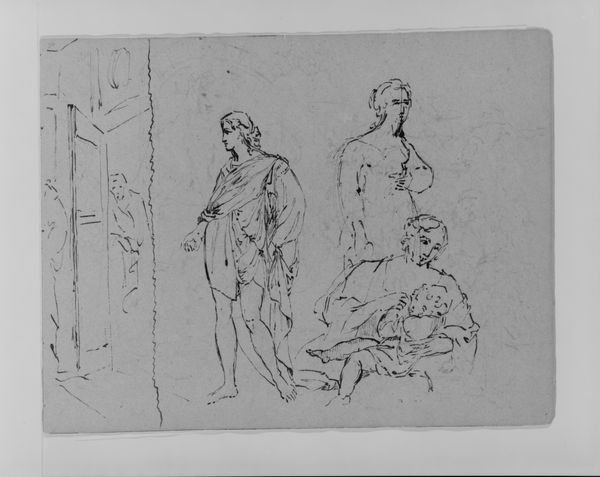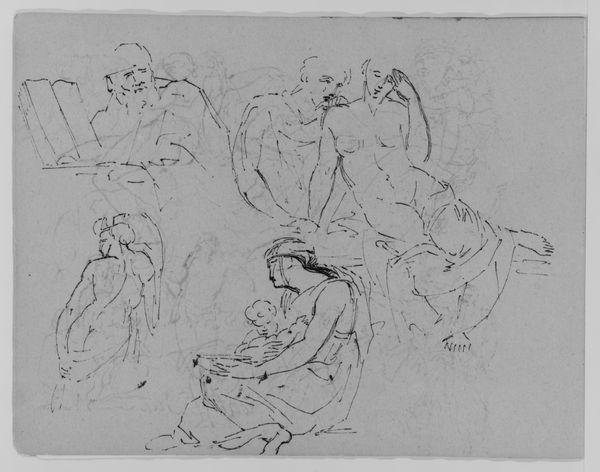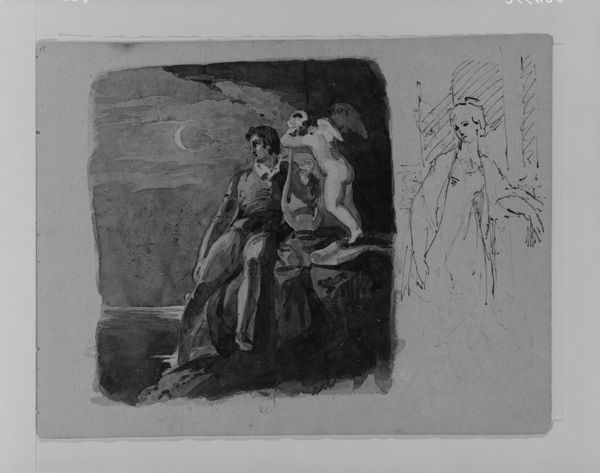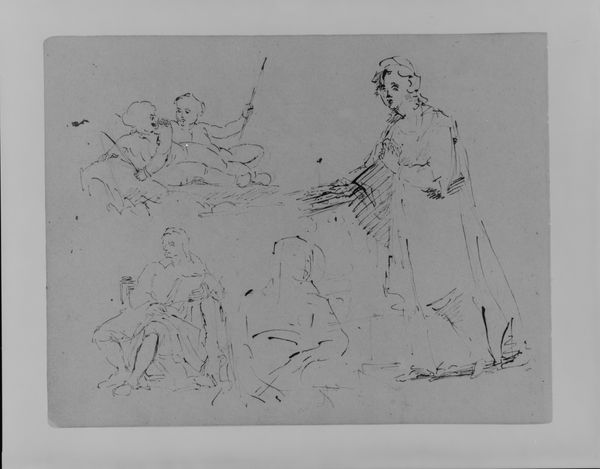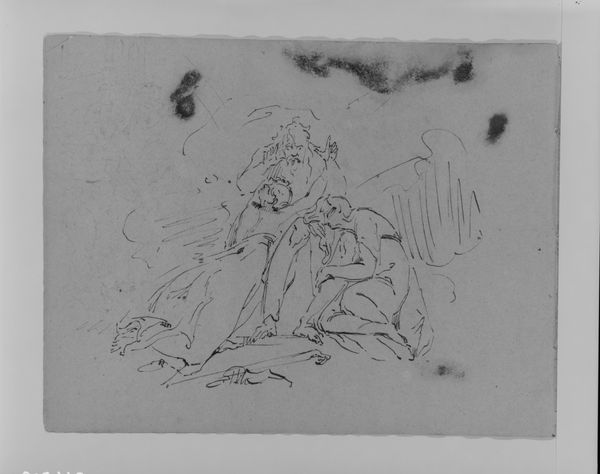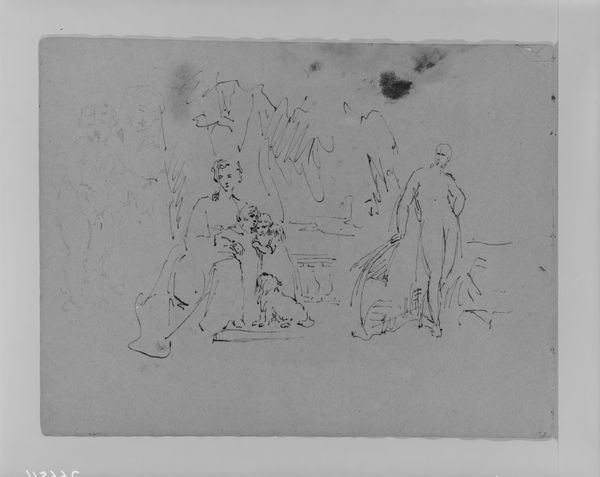
drawing, paper, ink, pencil
#
portrait
#
pencil drawn
#
drawing
#
negative space
#
narrative-art
#
pencil sketch
#
figuration
#
paper
#
ink
#
pencil drawing
#
romanticism
#
pencil
#
history-painting
#
academic-art
Dimensions: 9 x 11 1/2 in. (22.9 x 29.2 cm)
Copyright: Public Domain
Editor: We're looking at "(From Sketchbook)" by Thomas Sully, made between 1810 and 1820. It’s a drawing using pencil and ink on paper. It’s located at the Metropolitan Museum of Art. It feels like a glimpse behind the scenes; the composition seems fragmented and informal. What stands out to you? Curator: What strikes me immediately is how this sketch offers insight into the public function of art at that time. Consider Sully's ambition: to capture historical or narrative moments within a Romantic framework. What stories do you think he might be considering here? Note how he returns again and again to the central figure of a woman; what could her story be? Editor: Maybe something theatrical? The figures are posed so dramatically! The gentleman is kneeling before the lady. But why the other figures? Are these related characters? Curator: Exactly! Academic art of the time was deeply concerned with the "speaking" of history and art: with gesture and expression in history painting. These isolated portraits hint at this type of study: of different ways to create expressive, elevated figures. Where else do we see the impact of theater in his other works? Editor: I see that in his portraits of actors! So he wasn't just interested in representing someone's likeness, but in crafting a narrative around them. It reveals how carefully artists controlled the message viewers received about a painting and its subjects! Curator: Precisely. This sketch functions almost as a preparatory exploration into the social role and communication possibilities of historical and narrative art, something so critical to his larger practice, and the museums and the public of the time. Editor: I’d never thought of a simple sketch as such a loaded cultural artifact. This really highlights how artworks operated within a larger historical context and the artist’s own ambitions.
Comments
No comments
Be the first to comment and join the conversation on the ultimate creative platform.

